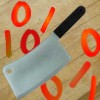On page 251 of DS33014K in Appendix A. is the list of ASM instructions.
I had printed out that document last winter. Until now I did not find this list. (Except in a book printed by MikroElectroika in Belgrade.) I think this list ought to be the first thing in Chapter One!
Thanks, all. Gotta "hit the books".
Ken
Ken




















Bookmarks